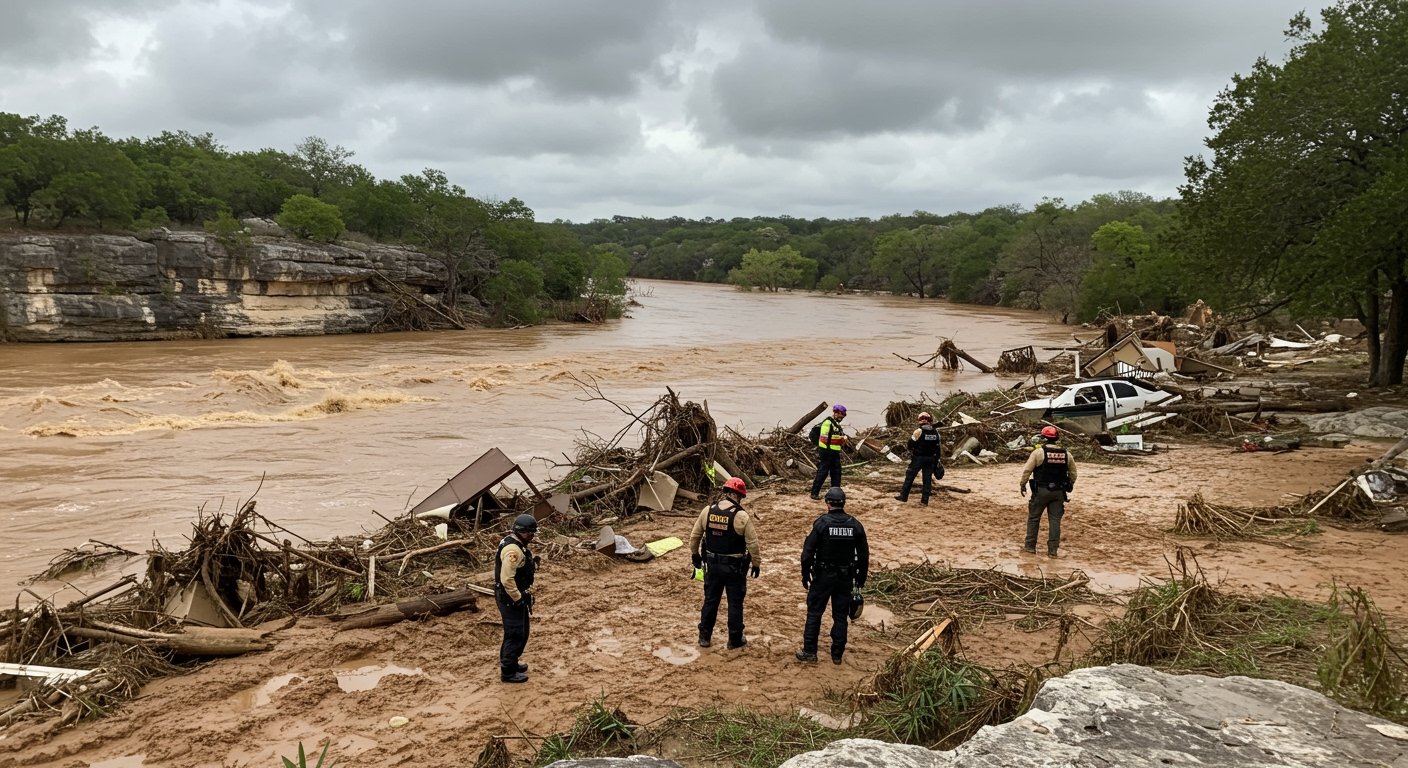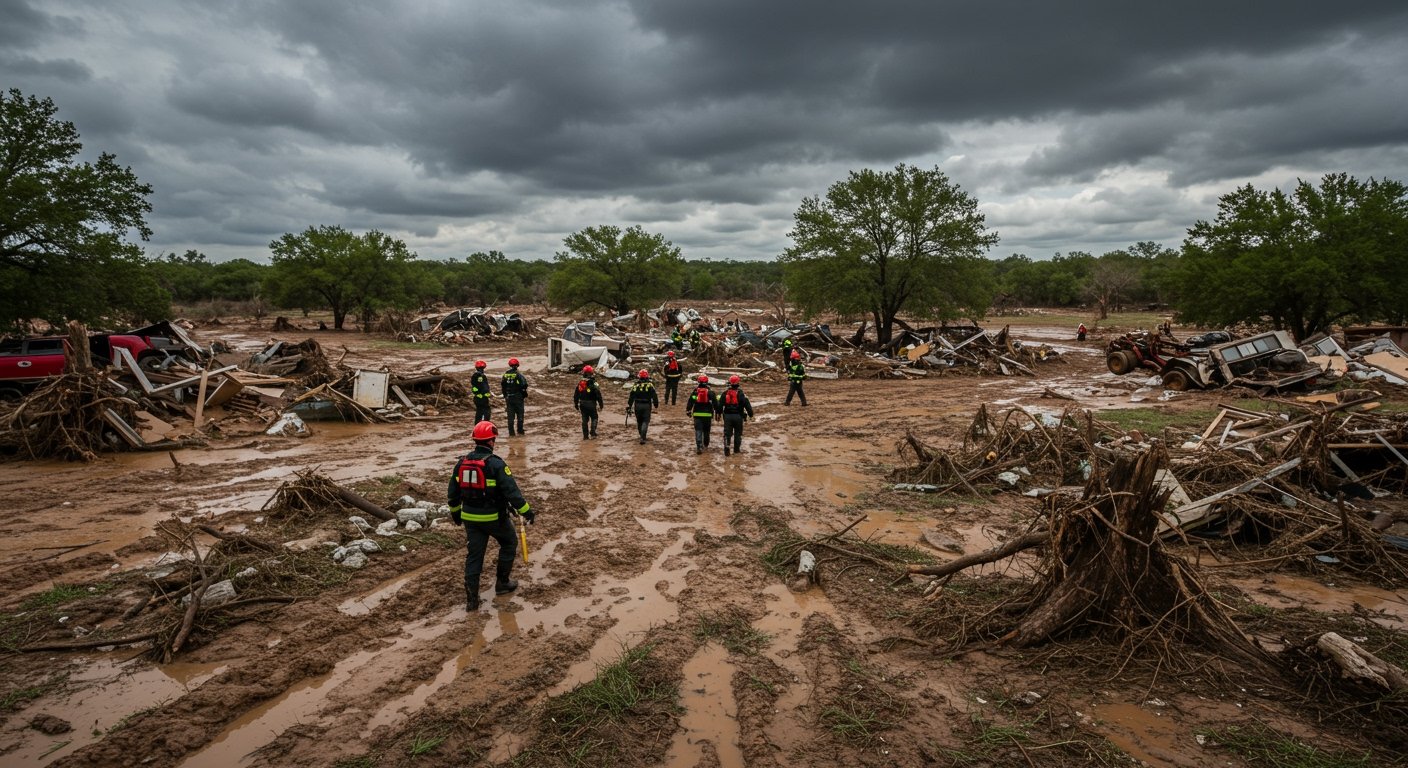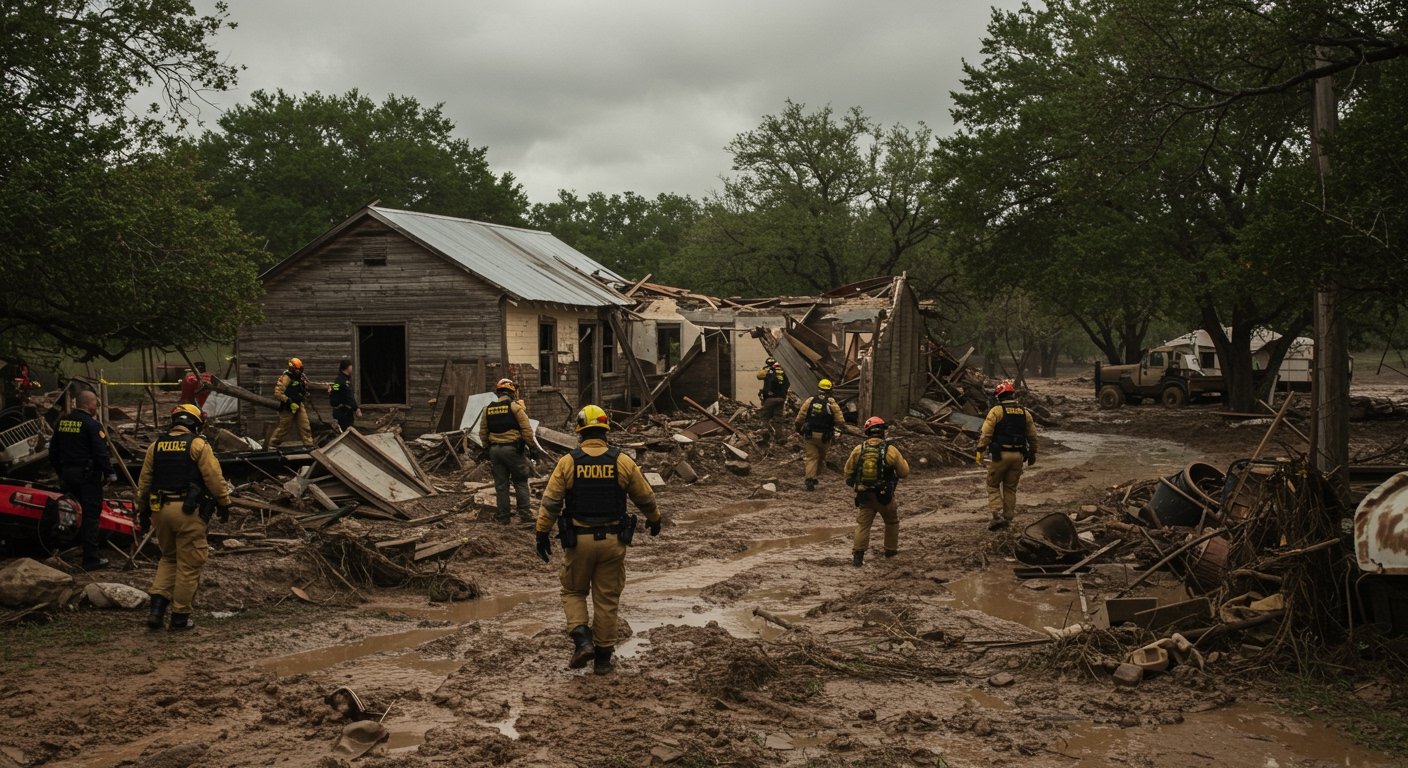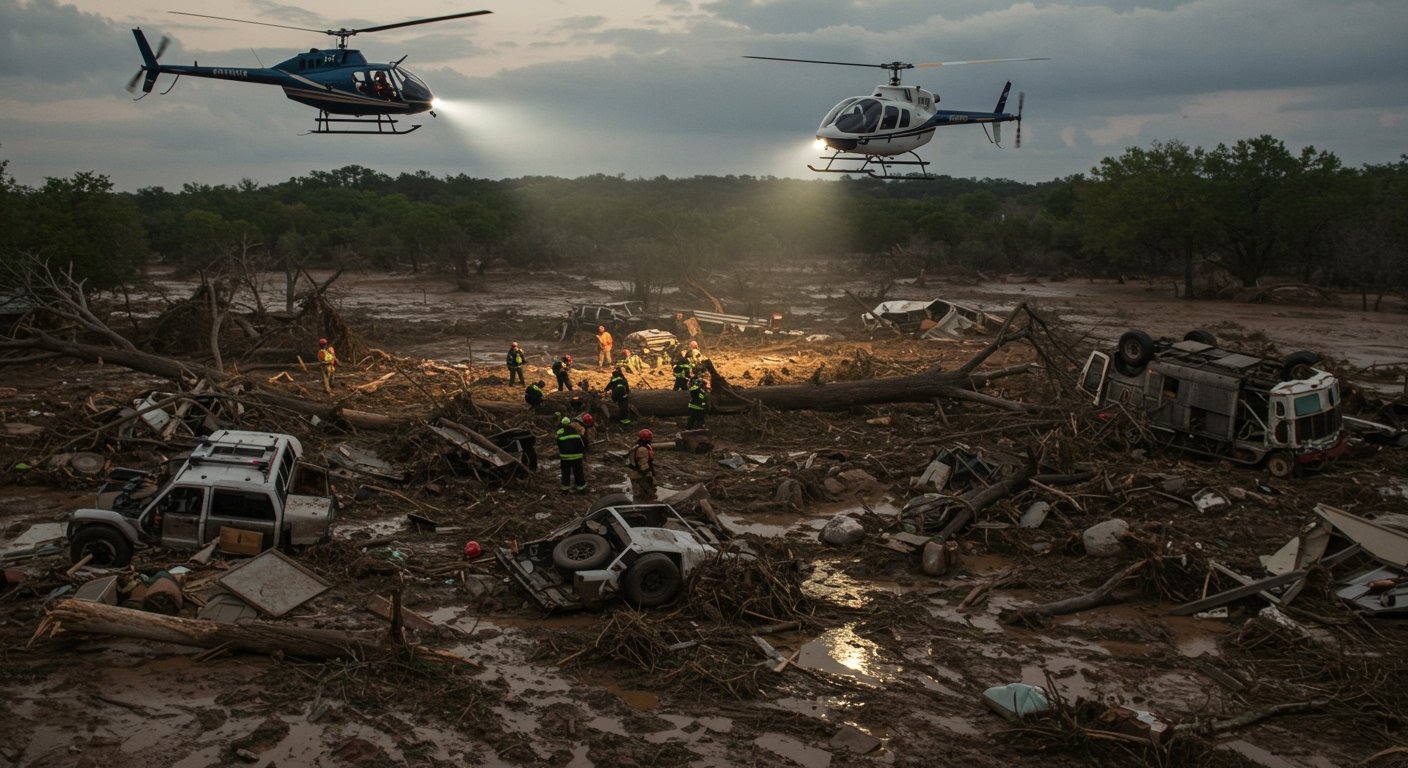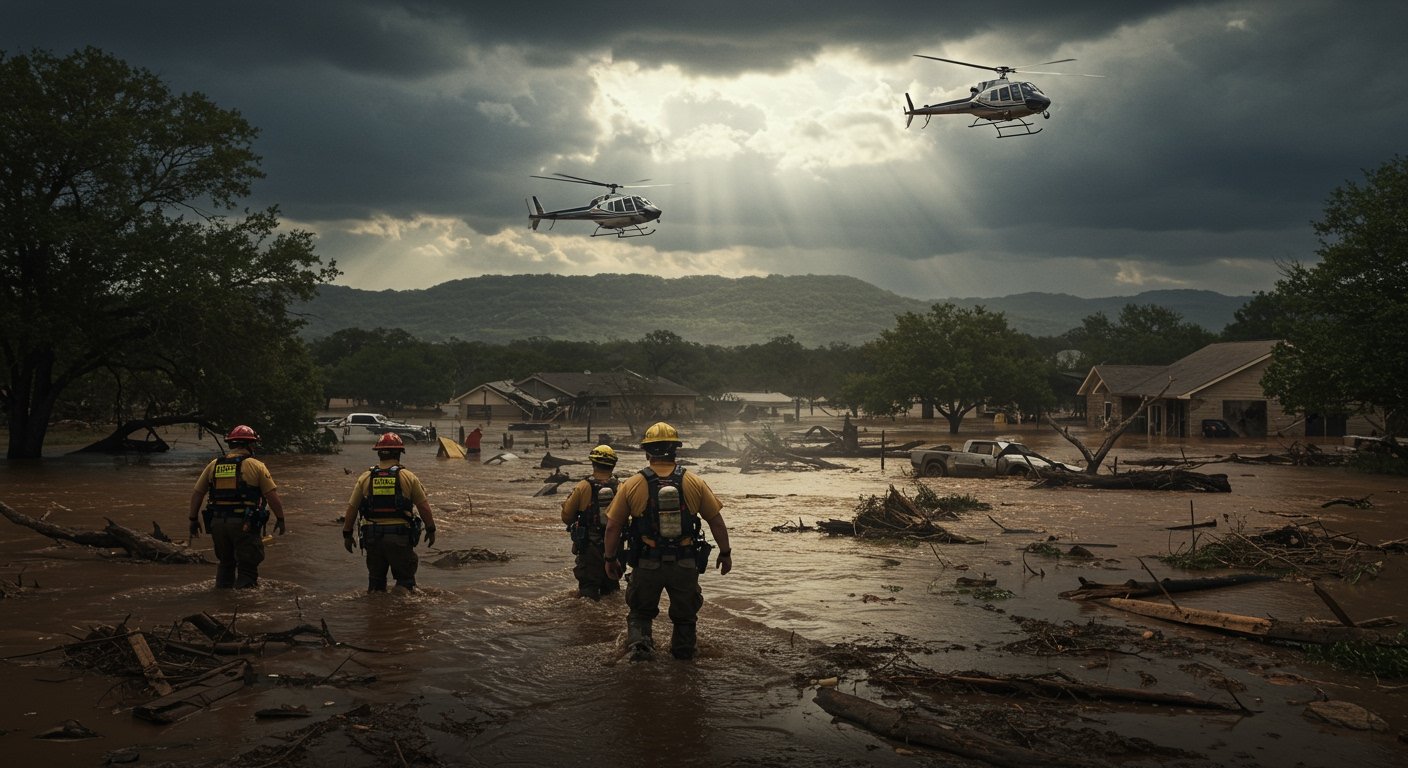Texas Hill Country Flood Disaster: Search Continues Amid Rising Death Toll
Unprecedented Devastation in Central Texas
Central Texas is grappling with the devastating aftermath of flash floods that swept through the region over the July Fourth weekend, resulting in a staggering death toll that has reached at least 79 people as of Sunday, July 6, 2025. Rescue crews are intensely searching for missing individuals amidst challenging conditions, particularly along the treacherous banks of the Guadalupe River.
The scale of the disaster has overwhelmed communities, transforming picturesque landscapes into scenes of destruction. Homes have been swept off foundations, vehicles tossed like toys, and the lives of dozens abruptly ended by the relentless power of the floodwaters. The confirmed fatalities underscore the ferocity and suddenness of the event, which struck with little warning in the early hours of Friday.
Kerr County Bears the Brunt
The county hit hardest by the catastrophic flooding is Kerr County, located deep within the Texas Hill Country. Kerr County Sheriff Larry Leitha has confirmed the recovery of 59 bodies within his jurisdiction alone. The grim count includes 38 adults and 21 children, painting a heartbreaking picture of the impact on families and the youngest members of the community.
Sheriff Leitha’s office has been at the forefront of the recovery efforts, navigating through debris and severely damaged areas to locate victims and provide assistance to survivors. The task is arduous, compounded by the widespread destruction that has rendered many roads impassable and altered the very geography of the river basin.
Fatalities Reported Across Multiple Counties
While Kerr County accounts for the majority of the confirmed deaths, other neighboring counties have also reported fatalities as a result of the widespread flooding. Travis County has confirmed four additional deaths, Burnet County has reported three fatalities, and Kendall County has tragically recorded one death. These numbers collectively push the confirmed state-wide death toll to at least 79, a number that is agonizingly close to 80 and highlights the extensive geographical reach and severity of the disaster.
Emergency responders from across Texas and beyond have converged on the affected areas, working tirelessly in a coordinated effort to search for survivors and recover those lost. The operation involves multiple agencies, including state and federal resources, utilizing helicopters, boats, and ground teams to cover vast and often difficult terrain.
Intense Search for Missing Campers
A significant focus of the ongoing search and rescue operation is the effort to locate 11 missing campers. The missing group includes 10 girls and one camp counselor. They were at Camp Mystic, a Christian summer camp located along the Guadalupe River in Kerr County when the floodwaters surged.
The disappearance of the campers has added a profound layer of anxiety and urgency to the recovery efforts. Search teams are concentrating their activities in the areas downstream from where the camp was located, scouring riverbanks, debris piles, and damaged structures in the hope of finding the missing individuals. The challenging nature of the terrain, characterized by steep banks, dense vegetation, and residual debris, complicates the search.
The Rapid Rise of the Guadalupe River
The catalyst for this devastating event was the extraordinarily rapid and intense rise of the Guadalupe River. Officials have reported that the river’s water level increased by an astonishing 26 feet in just 45 minutes before daybreak on Friday. This sudden, explosive surge of water left residents and campers with virtually no time to react or escape, contributing significantly to the high number of fatalities and the scale of destruction.
The speed and height of the floodwaters highlight the extreme nature of the weather event. Such a rapid rise turns rivers into powerful, destructive forces capable of sweeping away structures, vehicles, and anything else in their path. The images emerging from the affected areas show widespread devastation consistent with a sudden and overwhelming surge of water.
Extensive Rescue Operations
In the critical first 36 hours following the onset of the flooding, emergency responders conducted extensive rescue operations under extremely dangerous conditions. Their efforts resulted in the rescue of over 850 people who were trapped by rising waters or isolated by the destruction. These dramatic rescues, often involving swift-water teams and helicopter evacuations, saved hundreds of lives amidst the unfolding crisis.
The scale of the rescue effort underscores the widespread nature of the flooding and the thousands of people who were directly impacted. While rescue operations transition increasingly towards recovery as the days pass, the initial response was a massive undertaking that prevented an even higher death toll.
Community Impact and Moving Forward
The flash floods have left the Texas Hill Country reeling. Communities are grappling with the loss of loved ones, the destruction of property, and the immense task of recovery and rebuilding. The disaster has brought to the forefront the raw power of nature and the vulnerability of communities located in flood-prone areas.
As search efforts continue for the 11 missing campers and the full extent of the damage is assessed, the focus will shift towards providing support for survivors, restoring infrastructure, and beginning the long process of healing and rebuilding in the wake of this tragic natural disaster.


